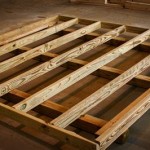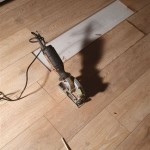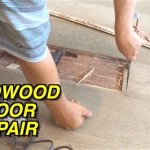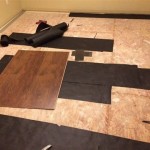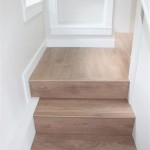How to Fix Laminate Floors That Buckle
Laminate flooring is a popular choice for homeowners due to its affordability, durability, and ease of installation. However, one common problem that can arise with laminate floors is buckling. Buckling refers to the warping or raising of the laminate planks, creating an uneven and unsightly surface. Understanding the causes of buckling is the first step toward effectively addressing the issue.
Several factors can contribute to laminate floor buckling. Moisture exposure is a primary culprit, as laminate flooring, being primarily composed of wood-based materials, is susceptible to water damage. Variations in temperature and humidity can also cause expansion and contraction of the laminate, leading to buckling if sufficient expansion gaps are not present. Improper installation techniques, such as insufficient subfloor preparation or inadequate expansion gaps, can also cause buckling.
Identifying the Cause of Buckling
Before attempting to repair a buckled laminate floor, it is essential to identify the underlying cause. This will help determine the most appropriate course of action and prevent the problem from recurring.
Moisture Exposure: Moisture is a significant contributor to laminate flooring imperfections. Look for signs of water damage, such as discoloration, staining, or swelling, around the affected area. Check for leaks from plumbing fixtures, appliances, or windows, which may be introducing moisture into the floor. High humidity levels in the room can also contribute to moisture absorption. Use a moisture meter to assess the moisture content of the laminate planks and the subfloor. Readings above the recommended levels indicate a moisture problem that needs to be addressed.
Expansion and Contraction: Examine the perimeter of the room for expansion gaps between the laminate flooring and the walls or other vertical surfaces. These gaps are essential to allow the laminate to expand and contract with changes in temperature and humidity without putting pressure on the planks. If the expansion gaps are too small or non-existent, the laminate will have nowhere to expand and may buckle. Also, consider if there have been drastic changes in temperature or humidity in the room recently. Seasonal changes can often trigger buckling if the flooring was installed during a period of relatively stable conditions.
Improper Installation: If the buckling is widespread and appears shortly after installation, it is likely due to improper installation techniques. This could include inadequate subfloor preparation, such as an uneven or unstable subfloor, or failure to properly acclimate the laminate planks before installation. It can also include improper locking of the planks during installation, resulting in loose or weak seams that are more prone to buckling.
Repairing Minor Buckling
In cases of minor buckling, where the planks are only slightly raised, it may be possible to repair the floor without replacing any planks. This typically involves addressing the underlying cause of the buckling and allowing the laminate to settle back into place.
Addressing Moisture Issues: If moisture is the cause of the buckling, the first step is to eliminate the source of the moisture. Repair any leaks, improve ventilation in the room, or use a dehumidifier to lower the humidity level. Once the moisture source is addressed, allow the affected area to dry thoroughly. This may take several days or even weeks, depending on the severity of the moisture exposure. Use fans to circulate air and speed up the drying process. Once the area is completely dry, the laminate planks may return to their original position.
Creating Expansion Gaps: If the expansion gaps are insufficient, carefully remove the baseboards or trim along the perimeter of the room. Use a saw or oscillating tool to create a small gap between the laminate flooring and the wall. The recommended gap size is typically around 1/4 to 3/8 of an inch, but it is essential to consult the manufacturer's instructions for specific recommendations. Once the expansion gaps are created, reinstall the baseboards or trim to conceal the gaps. This will allow the laminate to expand and contract freely, relieving pressure on the planks and reducing the likelihood of further buckling.
Weighting the Area: After addressing the moisture or expansion gap issues, it may be helpful to apply weight to the buckled area to encourage the planks to settle back into place. Place a flat, heavy object, such as a stack of books or a weight plate, on top of the buckled area. Cover the planks with a soft cloth or towel to prevent scratching. Leave the weight in place for several days or weeks, checking periodically to see if the buckling is improving. This gentle pressure can help the planks flatten out over time.
Repairing Major Buckling
In cases of significant buckling, where the planks are severely warped or damaged, it may be necessary to replace the affected planks. This involves carefully removing the damaged planks and installing new ones.
Removing Damaged Planks: Use a utility knife or a circular saw to cut out the damaged planks. Be careful not to damage the surrounding planks. For planks that are located in the middle of the floor, it may be necessary to use a chisel and hammer to carefully break them apart and remove them. For planks that are located along the edge of the room, it may be necessary to remove the baseboards or trim to access the planks.
Preparing the Subfloor: Once the damaged planks are removed, inspect the subfloor for any damage or imperfections. If the subfloor is uneven or unstable, it will need to be repaired or leveled before installing the new planks. Use a leveling compound to fill in any low spots or cracks in the subfloor. Ensure the subfloor is clean, dry, and free of debris before proceeding.
Installing New Planks: Install the new planks according to the manufacturer's instructions. Ensure the planks are properly locked together and that the seams are tight. Use a tapping block and hammer to gently tap the planks into place. For planks that are located along the edge of the room, it may be necessary to use a pull bar to tighten the seams. Be sure to maintain adequate expansion gaps around the perimeter of the room.
Preventing Future Buckling
Preventing laminate floor buckling is crucial to maintaining the appearance and longevity of the flooring. Several proactive measures can be taken to minimize the risk of buckling.
Proper Acclimation: Before installing laminate flooring, it is essential to acclimate the planks to the room's temperature and humidity levels. Store the planks in the room where they will be installed for at least 48 to 72 hours before installation. This allows the planks to adjust to the environment and minimizes the risk of expansion and contraction after installation. Follow the manufacturer's recommendations for acclimation time and conditions.
Maintaining Consistent Humidity Levels: Laminate flooring is sensitive to changes in humidity. Maintaining consistent humidity levels in the room can help prevent buckling. Use a humidifier or dehumidifier to regulate the humidity level, especially during extreme weather conditions. The ideal humidity level for laminate flooring is typically between 30% and 50%. Regularly monitor the humidity level and adjust accordingly.
Protecting Against Moisture: Protect laminate flooring against moisture exposure by promptly cleaning up spills and leaks. Use mats or rugs in high-traffic areas and near doorways to prevent dirt and moisture from being tracked onto the floor. Avoid using excessive water when cleaning laminate floors. Use a damp mop or cloth instead of a soaking wet one. Never steam clean laminate floors, as the excessive moisture can cause damage.
Ensuring Proper Installation: Proper installation is essential for preventing laminate floor buckling. Follow the manufacturer's instructions carefully and ensure that the subfloor is properly prepared. Use the correct underlayment and maintain adequate expansion gaps around the perimeter of the room. If you are not comfortable installing laminate flooring yourself, consider hiring a professional installer.
Regular Inspections: Conduct regular inspections of the laminate flooring to identify any signs of buckling or other damage. Address any issues promptly to prevent them from escalating. Check for leaks, moisture problems, and insufficient expansion gaps. Early detection and intervention can save time and money in the long run.
By addressing the underlying causes of laminate floor buckling and implementing preventative measures, homeowners can maintain the beauty and integrity of their floors for years to come. Addressing the situation promptly can prevent further damage and ensure the longevity of the flooring investment.

How To Repair Laminate Flooring Bucking

Buckling Floor Solutions

Laminate Floor Peaking Cupping Buckling Problems

How To Repair Laminate Flooring The Home

Tips To Fix Laminate Floor Bubbling

A Guide To Repairing Swollen Laminate Flooring Mersey

How To Repair Laminate Flooring The Home

How To Repair Buckled Hardwood Floors Bona Com

Tips To Fix Laminate Floor Bubbling

How To Fix A Bent Or Raised Up Edge On Your Luxury Vinyl Plank Flooring
See Also

